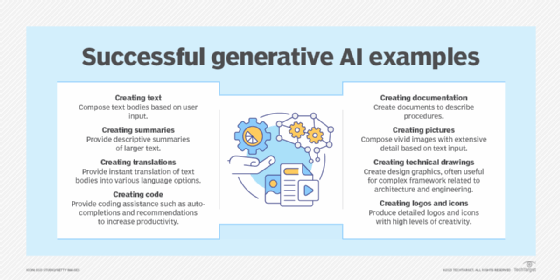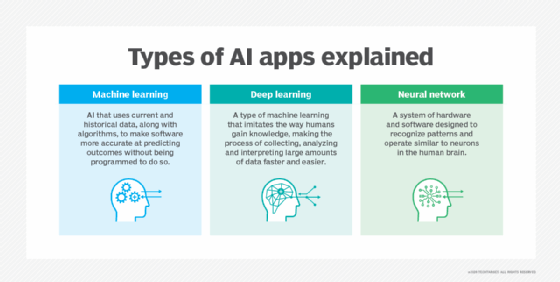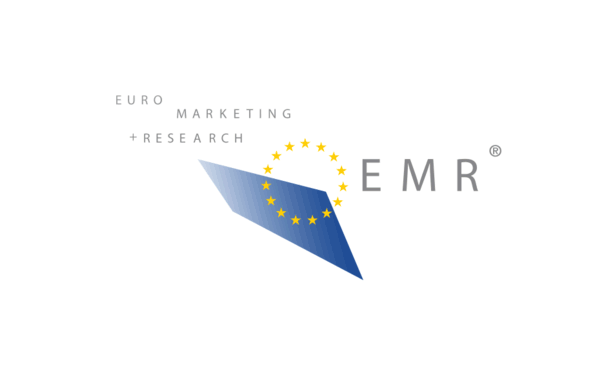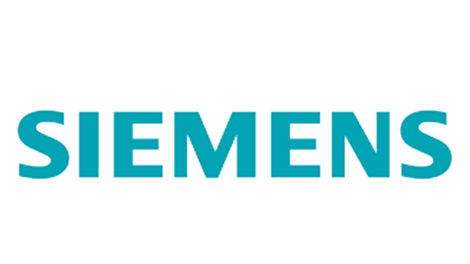Siemens – Siemens acquires Dotmatics to extend AI-powered software portfolio to Life Sciences
- Acquisition of Dotmatics, a leader in Life Sciences R&D software for $5.1 billion
- Expands Siemens’ market-leading position in industrial software by extending AI-powered Product Lifecycle Management (PLM) portfolio into Life Sciences to seamlessly connect R&D through manufacturing
- Increases Siemens’ industrial software total addressable market by $11 billion; aligns with strategic goal to accelerate customer innovation across industries
- Acquisition is another milestone of Siemens’ ONE Tech Company program expanding the Siemens Xcelerator platform into Life Sciences software with stronger customers focus, faster innovations and higher growth
Siemens AG announces that it has signed an agreement to acquire Dotmatics, a leading provider of Life Sciences R&D software based in Boston, for $5.1 billion from Insight Partners. This acquisition represents a strategic milestone for Siemens, expanding its comprehensive Digital Twin technology and AI-powered software into this rapidly growing complementary market. The US company offers a market leading platform with a highly profitable portfolio of scientific applications and multi-modal data management for Life Sciences R&D. The company’s offering accelerates customers’ innovation, delivering next generation collaboration and contextualized data to enable AI-powered multi-modal drug development.
“By acquiring Dotmatics, we’re strategically strengthening our position in Life Sciences and creating a world-leading AI-powered PLM software portfolio as part of Siemens Xcelerator. Artificial Intelligence has emerged as a transformative force across various industries, and its application in Life Sciences is becoming increasingly important”, said Roland Busch, President and CEO of Siemens AG. “The Dotmatics acquisition is part of our ONE Tech Company growth program, enhancing our leading position in industrial software and helping our customers to innovate even faster.”
“The acquisition of Dotmatics drives strong revenue synergies and is highly profitable and cash generative. Financing will be provided primarily through the sale of shares in listed companies, including Siemens Healthineers,” said Ralf P. Thomas, CFO of Siemens AG.
“Following an exciting journey with Insight Partners, where Dotmatics achieved remarkable growth and portfolio expansion, we are thrilled to announce our new chapter with Siemens,” said Thomas Swalla, CEO of Dotmatics. “Combining our next-generation scientific intelligence platform and industry-leading scientific applications together with Siemens’ Digital Twin and AI capabilities, we’ll drive a new wave of innovation in life sciences R&D. Together, we’ll accelerate innovation cycles for our customers and help scientists make breakthrough discoveries faster than ever before shaping the future of scientific innovation.”
Life Sciences presents an attractive complementary software market opportunity and expands Siemens’ industrial software total addressable market by $11 billion. This market is driven by structural shifts, such as increased medication need driven by aging societies and improved access to medicine, new treatment options from advancing science and the necessity for increased collaboration and visibility across complex value chains. These trends underscore the need for digital transformation, with software spending expected to double over the next five years.
Siemens’ expansion within Life Sciences aligns with its strategic goal to accelerate customer innovation across the top industries with the highest R&D spend. The acquisition is part of the investment track of Siemens’ ONE Tech Company program and following last week’s closing of Altair’s acquisition, yet another milestone. This growth program enables Siemens to further expand its market position and reach the next level of performance and value creation. Through acquisitions like this, as well as R&D investments into areas including software, AI-enabled products, connected hardware and sustainability, Siemens is clearly prioritizing capital allocation to strategic growth fields. The acquisition of Dotmatics enables Siemens to scale its technologies into Life Sciences and to fully address growth opportunities in this market. It will allow Siemens to combine its comprehensive manufacturing expertise, industrial simulation and AI capabilities with Dotmatics’ leading complementary applications, creating a first-of-its-kind end-to-end digital thread that connects data from research through to production in Life Sciences.
Significant synergies
Dotmatics is expected to generate more than $300 million revenue in fiscal year 2025 and is highly profitable and cash generative with an adjusted EBITDA margin of above 40 percent. The company’s mid-teens revenue growth and high profitability will be immediately accretive to Siemens’ growth, EBITDA margins and free cash flow, prior to any synergies. Siemens expects substantial revenue synergies: Medium-term revenue synergies expected of around $100 million per year accelerating to over $500 million per year in the long-term.
Capital structure at closing is expected to be within Siemens’ target corridor. Closing of the transaction is anticipated for the first half of fiscal year 2026 subject to customary closing conditions and applicable regulatory approvals.
SourceSiemens
EMR Analysis
More information on Siemens AG: See full profile on EMR Executive Services
More information on Dr. Roland Busch (President and Chief Executive Officer, Siemens AG): See full profile on EMR Executive Services
More information on Ralf P. Thomas (Member of the Managing Board and Chief Financial Officer, Siemens AG): See full profile on EMR Executive Services
More information on Karl-Heinz Seibert (Head of the Mergers & Acquisitions, Siemens AG till July 1st, 2025): See full profile on EMR Executive Services
More information on Dagmar Mundani (General Counsel, Siemens Healthineers AG, Siemens till June 1st, 2025 + Head of the Mergers & Acquisitions, Siemens AG as from June 1st, 2025): See full profile on EMR Executive Services
More information on “ONE Tech Company” Program by Siemens AG: See full profile on EMR Executive Services
More information on Xcelerator by Siemens: https://www.sw.siemens.com/en-US/digital-transformation/ + Xcelerator provides the engineering and manufacturing software, services and application development platform to blur the boundaries between industry domains. Companies can use this technology today to build the products of tomorrow. Turn complexity into your competitive advantage with Xcelerator.
Siemens Xcelerator consists of three pillars:
- Portfolio: A curated, modular portfolio of IOT-enabled hardware and software based on standard application programming interfaces, facilitating the integration of information technology (IT) and operational technology (OT).
- Ecosystem: A growing ecosystem of partners.
- Marketplace: Interactions and transactions among customers, part
More information on Siemens Healthineers AG by Siemens AG: https://www.siemens-healthineers.com/ + Siemens Healthineers pioneers breakthroughs in healthcare. For everyone. Everywhere. Sustainably. The company is a global provider of healthcare equipment, solutions and services, with activities in more than 180 countries and direct representation in more than 70. The group comprises Siemens Healthineers AG, listed as SHL in Frankfurt, Germany, and its subsidiaries. As a leading medical technology company, Siemens Healthineers is committed to improving access to healthcare for underserved communities worldwide and is striving to overcome the most threatening diseases. The company is principally active in the areas of imaging, diagnostics, cancer care and minimally invasive therapies, augmented by digital technology and artificial intelligence. In fiscal 2024, which ended on September 30, 2024, Siemens Healthineers had approximately 72,000 employees worldwide and generated revenue of around €22.4 billion.
More information on Dr. Bernd Montag (Chief Executive Officer, Siemens Healthineers AG, Siemens AG): See the full profile on EMR Executive Services
More information on Altair Engineering Inc. by Siemens AG: https://altair.com/ + When data science meets rocket science, incredible things happen. The innovation our world-changing technology enables may feel like magic to users, but it’s the time-tested result of the rigorous application of science, math, and Altair.
Our comprehensive, open-architecture simulation, artificial intelligence (AI), high-performance computing (HPC), and data analytics solutions empower organizations to build better, more efficient, more sustainable products and processes that will usher in the breakthroughs of tomorrow’s world. Welcome to the cutting edge of computational intelligence – no magic necessary.
More information on James R. Scapa (Founder, Chairman and Chief Executive Officer, Altair, Siemens AG): See full profile on EMR Executive Services
More information on Dotmatics by Siemens AG: https://www.dotmatics.com/ + Harmonizing Science & Data to Create a Better Future, Together.
From developing new personalized and preventive patient treatment solutions to revising climate change – Dotmatics solutions are at the core of scientific innovation.
Dotmatics is a leader in R&D scientific software connecting science, data, and decision-making. Its enterprise R&D platform and applications, including GraphPad Prism, SnapGene and Geneious, drive efficiency and accelerate innovation. More than 2 million scientists and 14,000 customers trust Dotmatics to help them create a healthier, cleaner, safer world. Dotmatics is a global team of more than 800 people dedicated to supporting its customers in over 180 countries. The company is headquartered in Boston, with 14 offices and R&D teams located around the world.
More information on Thomas Swalla (Chief Executive Officer, Dotmatics, Siemens AG): See full profile on EMR Executive Services
More information on Insight Partners: https://www.insightpartners.com/ + Insight Partners is a global software investor partnering with high-growth technology, software, and Internet startup and ScaleUp companies that are driving transformative change in their industries. As of September 30, 2024, the firm has over $90B in regulatory assets under management. Insight Partners has invested in more than 800 companies worldwide and has seen over 55 portfolio companies achieve an IPO. Headquartered in New York City, Insight has offices in London, Tel Aviv, and the Bay Area. Insight’s mission is to find, fund, and work successfully with visionary executives, providing them with tailored, hands-on software expertise along their growth journey, from their first investment to IPO.
More information on Jeff Horing (Co-founder and Managing Director, Insight Partners): https://www.insightpartners.com/team/?department=Investors + https://www.linkedin.com/in/jeffhoring2009/
More information on Jerry Murdock (Co-founder and Managing Director, Insight Partners): https://www.insightpartners.com/team/?department=Investors + https://www.linkedin.com/in/jerrymurdock/
EMR Additional Notes:
- AI – Artificial Intelligence:
- Artificial intelligence is the simulation of human intelligence processes by machines, especially computer systems.
- As the hype around AI has accelerated, vendors have been scrambling to promote how their products and services use AI. Often what they refer to as AI is simply one component of AI, such as machine learning. AI requires a foundation of specialized hardware and software for writing and training machine learning algorithms. No one programming language is synonymous with AI, but well a few, including Python, R and Java, are popular.
- In general, AI systems work by ingesting large amounts of labeled training data, analyzing the data for correlations and patterns, and using these patterns to make predictions about future states. In this way, a chatbot that is fed examples of text chats can learn to produce lifelike exchanges with people, or an image recognition tool can learn to identify and describe objects in images by reviewing millions of examples.
- AI programming focuses on three cognitive skills: learning, reasoning and self-correction.
- What are the 4 types of artificial intelligence?
- Type 1: Reactive machines. These AI systems have no memory and are task specific. An example is Deep Blue, the IBM chess program that beat Garry Kasparov in the 1990s. Deep Blue can identify pieces on the chessboard and make predictions, but because it has no memory, it cannot use past experiences to inform future ones.
- Type 2: Limited memory. These AI systems have memory, so they can use past experiences to inform future decisions. Some of the decision-making functions in self-driving cars are designed this way.
- Type 3: Theory of mind. Theory of mind is a psychology term. When applied to AI, it means that the system would have the social intelligence to understand emotions. This type of AI will be able to infer human intentions and predict behavior, a necessary skill for AI systems to become integral members of human teams.
- Type 4: Self-awareness. In this category, AI systems have a sense of self, which gives them consciousness. Machines with self-awareness understand their own current state. This type of AI does not yet exist.
- Machine Learning (ML):
- Developed to mimic human intelligence, it lets the machines learn independently by ingesting vast amounts of data, statistics formulas and detecting patterns.
- ML allows software applications to become more accurate at predicting outcomes without being explicitly programmed to do so.
- ML algorithms use historical data as input to predict new output values.
- Recommendation engines are a common use case for ML. Other uses include fraud detection, spam filtering, business process automation (BPA) and predictive maintenance.
- Classical ML is often categorized by how an algorithm learns to become more accurate in its predictions. There are four basic approaches: supervised learning, unsupervised learning, semi-supervised learning and reinforcement learning.
- Deep Learning (DL):
- Subset of machine learning, Deep Learning enabled much smarter results than were originally possible with ML. Face recognition is a good example.
- DL makes use of layers of information processing, each gradually learning more and more complex representations of data. The early layers may learn about colors, the next ones about shapes, the following about combinations of those shapes, and finally actual objects. DL demonstrated a breakthrough in object recognition.
- DL is currently the most sophisticated AI architecture we have developed.
- Computer Vision (CV):
- Computer vision is a field of artificial intelligence that enables computers and systems to derive meaningful information from digital images, videos and other visual inputs — and take actions or make recommendations based on that information.
- The most well-known case of this today is Google’s Translate, which can take an image of anything — from menus to signboards — and convert it into text that the program then translates into the user’s native language.
- Machine Vision (MV):
- Machine Vision is the ability of a computer to see; it employs one or more video cameras, analog-to-digital conversion and digital signal processing. The resulting data goes to a computer or robot controller. Machine Vision is similar in complexity to Voice Recognition.
- MV uses the latest AI technologies to give industrial equipment the ability to see and analyze tasks in smart manufacturing, quality control, and worker safety.
- Computer Vision systems can gain valuable information from images, videos, and other visuals, whereas Machine Vision systems rely on the image captured by the system’s camera. Another difference is that Computer Vision systems are commonly used to extract and use as much data as possible about an object.
- Generative AI (GenAI):
- Generative AI technology generates outputs based on some kind of input – often a prompt supplied by a person. Some GenAI tools work in one medium, such as turning text inputs into text outputs, for example. With the public release of ChatGPT in late November 2022, the world at large was introduced to an AI app capable of creating text that sounded more authentic and less artificial than any previous generation of computer-crafted text.




- Edge AI Technology:
- Edge artificial intelligence refers to the deployment of AI algorithms and AI models directly on local edge devices such as sensors or Internet of Things (IoT) devices, which enables real-time data processing and analysis without constant reliance on cloud infrastructure.
- Simply stated, edge AI, or “AI on the edge“, refers to the combination of edge computing and artificial intelligence to execute machine learning tasks directly on interconnected edge devices. Edge computing allows for data to be stored close to the device location, and AI algorithms enable the data to be processed right on the network edge, with or without an internet connection. This facilitates the processing of data within milliseconds, providing real-time feedback.
- Self-driving cars, wearable devices, security cameras, and smart home appliances are among the technologies that leverage edge AI capabilities to promptly deliver users with real-time information when it is most essential.
- Multimodal Intelligence and Agents:
- Subset of artificial intelligence that integrates information from various modalities, such as text, images, audio, and video, to build more accurate and comprehensive AI models.
- Multimodal capabilities allows to interact with users in a more natural and intuitive way. It can see, hear and speak, which means that users can provide input and receive responses in a variety of ways.
- An AI agent is a computational entity designed to act independently. It performs specific tasks autonomously by making decisions based on its environment, inputs, and a predefined goal. What separates an AI agent from an AI model is the ability to act. There are many different kinds of agents such as reactive agents and proactive agents. Agents can also act in fixed and dynamic environments. Additionally, more sophisticated applications of agents involve utilizing agents to handle data in various formats, known as multimodal agents and deploying multiple agents to tackle complex problems.
- Small Language Models (SLM) and Large Language Models (LLM):
- Small language models (SLMs) are artificial intelligence (AI) models capable of processing, understanding and generating natural language content. As their name implies, SLMs are smaller in scale and scope than large language models (LLMs).
- LLM means large language model—a type of machine learning/deep learning model that can perform a variety of natural language processing (NLP) and analysis tasks, including translating, classifying, and generating text; answering questions in a conversational manner; and identifying data patterns.
- For example, virtual assistants like Siri, Alexa, or Google Assistant use LLMs to process natural language queries and provide useful information or execute tasks such as setting reminders or controlling smart home devices.
- Agentic AI:
- Agentic AI is an artificial intelligence system that can accomplish a specific goal with limited supervision. It consists of AI agents—machine learning models that mimic human decision-making to solve problems in real time. In a multiagent system, each agent performs a specific subtask required to reach the goal and their efforts are coordinated through AI orchestration.
- Unlike traditional AI models, which operate within predefined constraints and require human intervention, agentic AI exhibits autonomy, goal-driven behavior and adaptability. The term “agentic” refers to these models’ agency, or, their capacity to act independently and purposefully.
- Agentic AI builds on generative AI (gen AI) techniques by using large language models (LLMs) to function in dynamic environments. While generative models focus on creating content based on learned patterns, agentic AI extends this capability by applying generative outputs toward specific goals.
- Software vs. Hardware vs. Firmware:
- Hardware is physical: It’s “real,” sometimes breaks, and eventually wears out.
- Since hardware is part of the “real” world, it all eventually wears out. Being a physical thing, it’s also possible to break it, drown it, overheat it, and otherwise expose it to the elements.
- Here are some examples of hardware:
- Smartphone
- Tablet
- Laptop
- Desktop computer
- Printer
- Flash drive
- Router
- Software is virtual: It can be copied, changed, and destroyed.
- Software is everything about your computer that isn’t hardware.
- Here are some examples of software:
- Operating systems like Windows 11 or iOS
- Web browsers
- Antivirus tools
- Adobe Photoshop
- Mobile apps
- Firmware is virtual: It’s software specifically designed for a piece of hardware
- While not as common a term as hardware or software, firmware is everywhere—on your smartphone, your PC’s motherboard, your camera, your headphones, and even your TV remote control.
- Firmware is just a special kind of software that serves a very narrow purpose for a piece of hardware. While you might install and uninstall software on your computer or smartphone on a regular basis, you might only rarely, if ever, update the firmware on a device, and you’d probably only do so if asked by the manufacturer, probably to fix a problem.
- Hardware is physical: It’s “real,” sometimes breaks, and eventually wears out.
- Product Lifecycle Management (PLM):
- At the most fundamental level, product lifecycle management (PLM) is the strategic process of managing the complete journey of a product from initial ideation, development, service, and disposal. Put another way, PLM means managing everything involved with a product from cradle to grave.
- Digital Twin:
- Digital Twin is most commonly defined as a software representation of a physical asset, system or process designed to detect, prevent, predict, and optimize through real time analytics to deliver business value.
- A digital twin is a virtual representation of an object or system that spans its lifecycle, is updated from real-time data, and uses simulation, machine learning and reasoning to help decision-making.
- EBITA:
- Earnings before interest, taxes, and amortization (EBITA) is a measure of company profitability used by investors. It is helpful for comparing one company to another in the same line of business.
- EBITA = Net income + Interest + Taxes + Amortization
- EBITDA:
- Earnings before interest, taxes, depreciation, and amortization (EBITDA) is an alternate measure of profitability to net income. By including depreciation and amortization as well as taxes and debt payment costs, EBITDA attempts to represent the cash profit generated by the company’s operations.
- EBITDA and EBITA are both measures of profitability. The difference is that EBITDA also excludes depreciation.
- EBITDA is the more commonly used measure because it adds depreciation—the accounting practice of recording the reduced value of a company’s tangible assets over time—to the list of factors.
- EV/EBITDA (Enterprise Multiple):
- Enterprise multiple, also known as the EV-to-EBITDA multiple, is a ratio used to determine the value of a company.
- It is computed by dividing enterprise value by EBITDA.
- The enterprise multiple takes into account a company’s debt and cash levels in addition to its stock price and relates that value to the firm’s cash profitability.
- Enterprise multiples can vary depending on the industry.
- Higher enterprise multiples are expected in high-growth industries and lower multiples in industries with slow growth.
- Free Cash Flow (FCF):
- Free cash flow (FCF) is a company’s available cash repaid to creditors and as dividends and interest to investors. Management and investors use free cash flow as a measure of a company’s financial health. FCF reconciles net income by adjusting for non-cash expenses, changes in working capital, and capital expenditures. Free cash flow can reveal problems in the financial fundamentals before they become apparent on a company’s income statement. A positive free cash flow doesn’t always indicate a strong stock trend. FCF is money that is on hand and free to use to settle liabilities or obligations.


